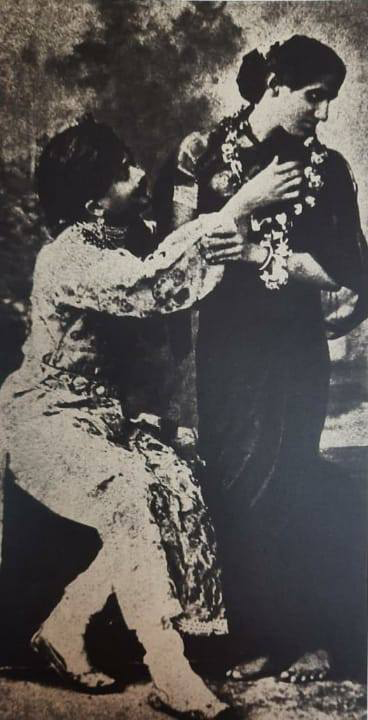Shakuntala
Kalidasa created his version of Shakuntalam roughly around 4th century CE, primarily borrowing from its earliest narrative in Mahabharata. Otherwise a linear narrative of love, separation and reunion, based on sringara and vira rasas, Kalidasa introduced counter-narratives, irrational and magical, through subplots pivoting around a curse and a token ring. The curse remains the most powerful introduction by the playwright, where an intervention beyond human manipulation creates dichotomy between desire and duty, identity and legitimacy and between personal memory and vision of a collective past. The female protagonist takes the centre-stage of the narrative, responsible for the turn of events.
During late nineteenth century, the Sanskrit text of Abhiygana Shakuntalam became a representative theme for nationalist ideology, where the romanticized persona of Shakuntalam in the upper-caste culture, became the ‘ideal’ for projecting the bourgeois appropriation of “feminine virtues of spirituality”. The image of Shakuntalam became a recurring motif both in nationalist school of painting and theatre. While the ‘ideal woman’ took the centre-stage of narratives, theatre in India was still struggling with representation of realism and questions of projecting the classical past on the modern stage. In this quest, Bal Gandharva, who was heavily influenced by the paintings of Ravi Varma, started perfecting his image of the ideal feminine protagonist by borrowing “gestures, postures and styles of costume drapery from Ravi Varma’s renderings of female prototypes that had come to represent national female ideals.”
Excerpt from Act V:
Shakuntala: Evil man! you see everything distorted by your own ignoble heart. Who would want to imitate you now, hiding behind your show of justice, like a well over grown with weeds?
Image: Bal Gandharva as Shakuntala with Govindrao Tembe as Dushyant in Annasaheb Kirloskar’s Shakuntal,directed by Govind Ballal Deval, Kirloskar Natak Mandali, 1905.
Image courtesy: Amal Allana, ed. ‘The Act of Becoming: Actors Talk’, National School of Drama, 2013.

